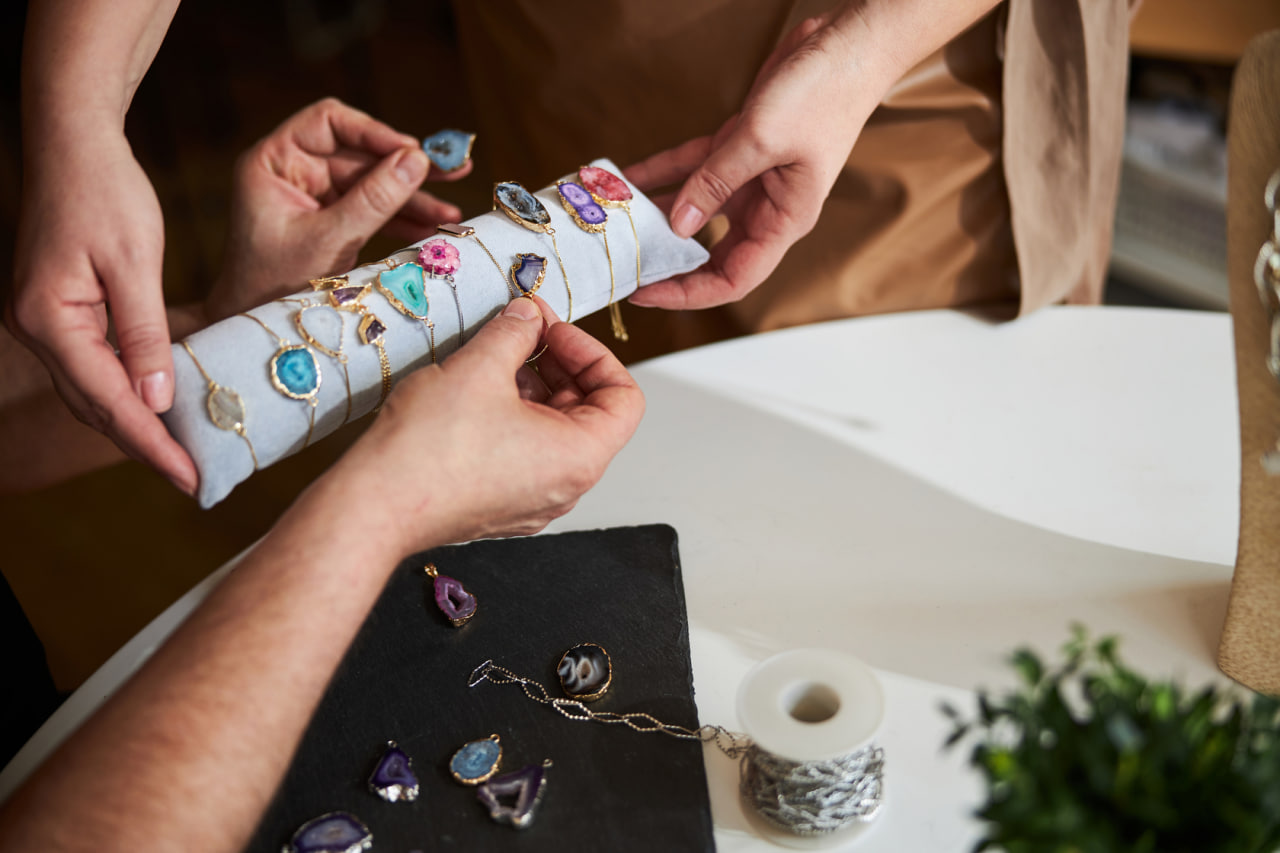Finding Inspiration in Everyday Objects
Creativity in jewelry-making often begins with observation. Everyday objects—buttons, shells, fabric scraps, paper, or even household hardware—can be transformed into unique pieces of jewelry. By looking at ordinary materials through the lens of design, you can discover shapes, textures, and colors that inspire innovative creations.
The key is to consider how an object’s inherent qualities—size, color, texture, and flexibility—can contribute to wearable art. This approach encourages experimentation, allowing creators to blend traditional jewelry techniques with unconventional materials to achieve original and personalized designs.
Selecting Materials for Jewelry Projects
When choosing everyday materials, consider durability, weight, and compatibility with other components. Materials that are too fragile or heavy may not hold up well in finished pieces, while those that are lightweight and versatile provide more creative freedom.
- Textiles and Fabric – Ribbons, lace, and woven fabrics can be twisted, braided, or layered to create necklaces, bracelets, or earrings.
- Paper and Cardstock – Rolled, folded, or cut into beads or charms, paper can be treated with varnish or resin for strength and longevity.
- Natural Elements – Stones, shells, driftwood, and dried flowers add organic textures and colors, perfect for bohemian or rustic jewelry.
- Household Materials – Buttons, bottle caps, wire, and small mechanical parts can be repurposed to create industrial, steampunk, or eclectic designs.
Considering both aesthetic and practical aspects ensures that your creations are not only visually striking but also functional and durable.
Techniques for Transforming Materials
Different materials require tailored techniques to transform them into wearable jewelry. Understanding these methods allows you to highlight the material’s unique properties while ensuring stability and finish.
- Wire Wrapping – Flexible wire can secure stones, buttons, or small objects, forming pendants, rings, or connectors.
- Beading and Stringing – Beads made from paper, wood, or recycled materials can be threaded onto cord, chain, or elastic to create necklaces and bracelets.
- Adhesive and Resin Techniques – Glue, resin, or epoxy can attach or coat delicate items like dried flowers or lightweight objects, preserving their appearance and adding durability.
- Textile Manipulation – Twisting, braiding, weaving, or knotting fabric, yarn, or ribbon creates texture and adds color variation.
Experimentation with these techniques allows designers to discover new ways of using everyday objects and encourages innovative approaches to composition and structure.
Combining Traditional and Unconventional Elements
One of the most exciting aspects of using everyday materials is combining them with traditional jewelry components. Metals, gemstones, beads, and findings can be paired with unconventional elements to create hybrid pieces that are both unique and functional.
For example, a pendant made from a small gear or bottle cap can be enhanced with metal accents, chains, or gemstones to produce an eye-catching statement piece. Layering materials, mixing textures, and juxtaposing colors provides depth and visual interest, making the piece stand out.
Personal Expression and Storytelling
Jewelry made from everyday materials often carries personal significance, reflecting the maker’s experiences, memories, and creativity. Incorporating objects that hold emotional value—like charms from old clothing or tokens from travels—creates pieces with meaning beyond aesthetics.
Storytelling through jewelry allows designers to connect with wearers on a deeper level. Each element contributes to a narrative, whether it’s a memory, a concept, or a theme. Personalized, meaningful designs often resonate more strongly and are treasured for their uniqueness.
Sustainability and Upcycling
Using everyday materials encourages sustainable and eco-friendly practices. Upcycling items that might otherwise be discarded reduces waste and promotes environmental responsibility. Repurposing materials like fabric scraps, old jewelry, or packaging components turns potential trash into creative treasures.
Sustainable jewelry-making practices also challenge designers to think resourcefully, experiment with limited materials, and innovate in ways that traditional approaches may not encourage.
Tools and Workspace Considerations
Working with unconventional materials requires a flexible workspace and appropriate tools. Cutting, drilling, shaping, or attaching items may involve pliers, wire cutters, scissors, tweezers, glue, or resin tools. Ensuring safety and organization allows for precise and efficient crafting.
A dedicated area for experimenting with materials, testing combinations, and documenting techniques encourages consistent creativity and skill development. Proper lighting, storage, and layout help maintain focus and prevent damage to delicate components.
Embracing Experimentation and Creativity
Turning everyday materials into jewelry is a process of exploration and innovation. By experimenting with different objects, textures, and combinations, designers expand their skills and discover unique styles. Mistakes or unexpected outcomes often lead to exciting discoveries, providing inspiration for future projects.
Creative freedom and playfulness are essential to the process. Observing your surroundings, testing unconventional ideas, and embracing imperfection result in jewelry that is original, expressive, and truly one-of-a-kind.

